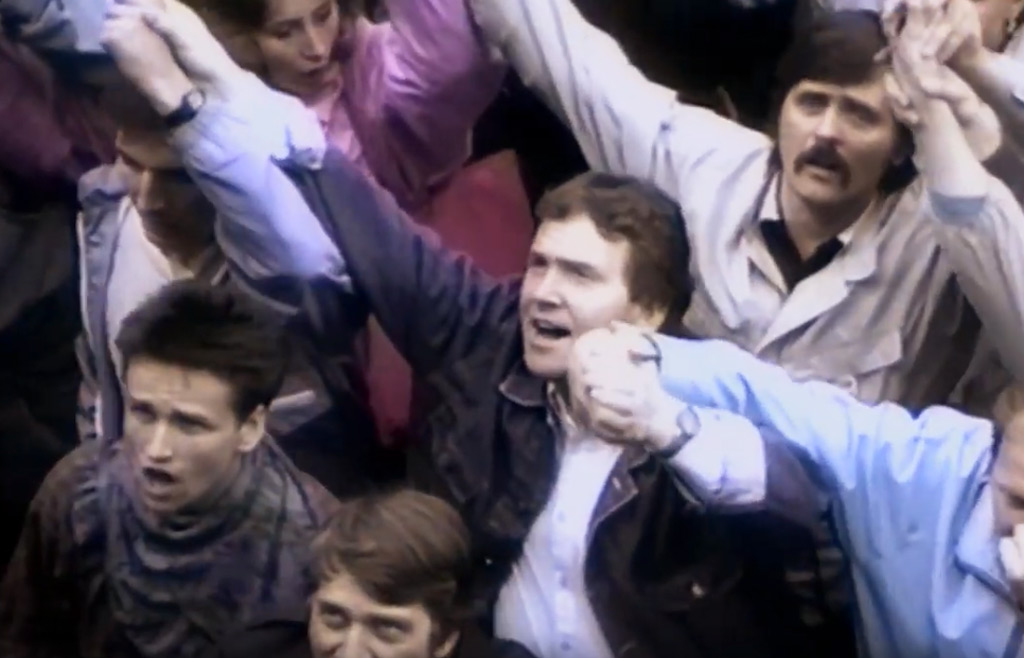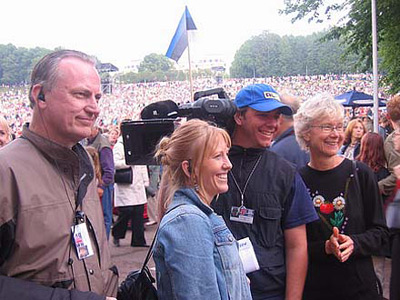
The gripping story of how Estonia won its independence through one of the most peaceful ways imaginable—thousands singing their national songs together—is movingly captured in The Singing Revolution, a documentary by James and Maureen Tusty now available on Apple TV.
At the 100th anniversary of the Estonian Song Festival in 1969, the choirs and audience began to sing “Land of My Fathers, Land That I Love” in defiance of the Soviet government that had occupied their country since 1940. Soviet officials sternly ordered everyone to leave the stage. No one moved. So the Soviets told a military band to start playing to drown out the voices of the singers.
Why all this drama over a single song?
You have to understand the Estonian people, their culture, and their history to comprehend the importance of that song, and that moment.
Estonians have continuously inhabited their land for close to 8,000 years. From approximately 6000 B.C. until 1208 A.D., Estonians were independent, fending off attacks from outsiders while building a culturally rich and affluent society.
In 1208, German merchants and missionaries noted the region’s wealth, and the German bishop Albert assembled a mercenary army to conquer the region. For the next 500 years, Estonian rule passed from Germans and Danes to Swedes and Poles, and finally to the Russians in 1721.

In the 1860s, Estonia’s “Great Awakening” began, with renewed interest by the people in their language, literature, art, and music. During this decade, the poet and playwright Lydia Koidula wrote a series of works honoring Estonia. The first Estonian Song Festival was held in 1869.
The Great Awakening eventually led to an increased desire for self-rule. In 1920, Estonia regained its independence, emerging from 200 years of Czarist rule. For the next 20 years Estonia’s economy prospered, nearly matching its larger neighbor to the north, Finland. But in June of 1940, the Soviet Union took over the government, forbade the Estonian flag, imprisoned resistors, and made Russian the official language of the country.
In 1947, during the first Estonian Song Festival held after the Soviet occupation, Gustav Ernesaks set to music the words of a century-old poem written by Lydia Koidula: “Land of My Fathers, Land That I Love.” For the next 50 years it became the musical declaration of every Estonian’s desire for freedom.
The song was not allowed on the Song Festival program in the 1950s. But in the early 1960s, Estonians started defiantly singing the song against Soviet wishes. By 1965 it was included in the program.
It was at that 100th anniversary in 1969, when the choirs and audience began to sing the song a second time, that a military band was ordered to drown them out. It quickly became clear that a hundred instruments were no match for over a hundred thousand voices.
The Estonians sang the song again and again in the face of authorities. Finally, the Soviets invited the composer on stage to conduct the choir for yet another encore, pretending they had intended to allow it all along.
For the next 20 years, Estonians persisted in what would become known as “The Singing Revolution.” In the mid-1980s, rock songs became the rallying cries for Estonian independence and were sung repeatedly at large public gatherings. As one Estonian says, “When 20,000 people start to sing one song, then you can’t shut them up. It’s impossible.” Soviet authorities wanted to ban the gatherings, but weren’t sure what to do in light of the new policy of glasnost, or openness.
Then in 1991, Moscow hard-liners staged a coup d’état and placed Mikhail Gorbachev, President of the Soviet Union, under house arrest. When Soviet troops rolled into Estonia to quell any thoughts of freedom, unarmed people came into the streets and faced down the soldiers and tanks, holding hands and singing, while their leaders assembled to declare Estonia’s independence.
This is how Estonians made song a non-violent tool for defiance of authority and an affirmation of their cultural and political sovereignty. After 50 years of hope and music, Estonia’s “Singing Revolution” restored freedom to their land.
Watch the trailer for The Singing Revolution:
The Singing Revolution onscreen
Filmmaker James Tusty, whose father Julius arrived in the U.S. from Estonia in 1924, grew up listening to stories about his father’s homeland. When James and his wife Maureen were teaching film classes in Estonia in 1999 and 2001, their Estonian friends constantly regaled them with unbelievable stories about the Singing Revolution.
“By 2003, we were determined to tell this story to the rest of the world,” the Tustys write on their website. “We had found virtually no one outside the Baltics who knew of the Singing Revolution. And yet it was one of the most amazing stories we had ever heard.”
The resulting film is an inspiring story of hope, nonviolence, and perseverance that has played to standing ovations in theaters across the country and is now available on Apple TV.
Visit the Index for a complete list of Movie Reviews.
